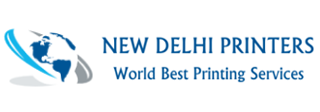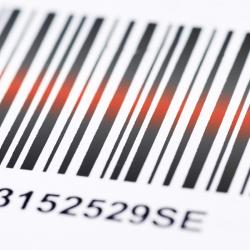Promoters Of AIDC Community

Gulshan Marwah
CEO: MINDWARE (1996)

Gulshan Marwah
Owner: New Delhi Printers

Gulshan Marwah
Owner: Barcode Vault
Published on 28 Nov, 2024 | 01:10:49 PM
Share to:What is a Barcode?
A barcode is a square or rectangular image consisting of a series of parallel black lines and white spaces of varying widths that can be read by a scanner. Barcodes are applied to products as a means of quick identification. A bar code often seen affixed to retail store items, identification cards, and postal mail to identify a particular product number, person, or location. They are used in warehouses to track inventory, and on invoices to assist in accounting, among many other uses.
The code uses a sequence of vertical bars and spaces to represent numbers and other symbols. A bar code symbol typically consists of five parts: a quiet zone, a start character, data characters (including an optional check character), a stop character, and another quiet zone.
Barcodes used by the U.S. postal service that helps speed the delivery of mail is another perfect example of how a barcode could be used. The picture is an example of what a barcode of an address.
Who inventedBarcode?
Barcode was invented by Norman Joseph Woodland and Bernard Silver and patented in the US in1952. The invention was based on Morse code that was extended to thin and thick bars. However, it took over twenty years before this invention became commercially successful. Early use of one type of barcode in an industrial context was sponsored by the Association of American Railroads in the late 1960s. Developed by General Telephone and Electronics (GTE) and called KarTrakACI (Automatic Car Identification), this scheme involved placing colored stripes in various combinations on steel plates which were affixed to the sides of railroad rolling stock. Two plates were used per car, one on each side, with the arrangement of the colored stripes encoding information such as ownership, type of equipment, and identification number. The plates were read by a trackside scanner, located for instance, at the entrance to a classification yard, while the car was moving past. The project was abandoned after about ten years because the system proved unreliable after long-term use.
Barcodes became commercially successful when they were used to automate supermarket checkout systems, a task for which they have become almost universal. Their use has spread too many other tasks that are generically referred to as automatic identification and data capture (AIDC). The very first scanning of the now ubiquitous Universal Product Code (UPC) barcode was on a pack of Wrigley Company chewing gum in June 1974. QR codes, a specific type of 2D barcode, have recently become very popular.
Types of Barcode
Linear orone-dimensional (1D)
Two-dimensional (2D)
Three-dimensional(3D)
Linear or one-dimensional (1D)
There are many different types of OneDimensional Barcodes. This tutorial will show you many of the 1D BarcodeFormats and will help you understand the differences. A 1D barcode or OneDimensional Barcode is called this because of how the barcode is read. A 1Dbarcode is read from side to side. e.g. Code128, Code 39,and UPC are referred to as Linear or1D (one-dimensional) barcode symbologies.
1DBarcode:
Holds less than 85 characters (symbology specific character limit).
A majority of customers are set up to use linear barcodes (Linear scanner).
Creates a wide barcode.
The main benefit of 1D barcodes in price. The barcode scanners for 1D barcodes are less expensive than the 2D barcode scanning is newer and thus more expensive. If your organization does not need a large amount of data is barcodes, 1D is the money-wise option. Another advantage is the overall performance of the 1Dbarcode scanner. Generally, it performs faster, has a longer scanning range, and lighting is irrelevant.
Two-dimensional (2D)
Do you know what 2D barcode symbologies are? They are two-dimensional barcodes that consist of patterned blocks, circles, and squares that resemble the no-reception static on a TV. Often physically smaller in size than linear barcodes, they contain hundreds of characters of data.
Because of their larger storage capacity, 2D barcodes ”such as QR code and PDF417” do not require databases. You simply scan them to instantly access the information you need.In fact, consumers frequently scan 2D barcodes from their smartphones and tablets to access information about products. However, companies require 2Dscanners to read 2D barcodes.
Two-dimensional (2D) barcodes, such as Data Matrix, PDF417, and QR Code,may have patterns of squares, dots, hexagons, and other geometric patterns.While maintaining a fairly small size, these barcode types hold much more data than linear barcodes. 2D barcodes can hold hundreds of characters.
2D Barcode features:
Encodes/holds hundreds of characters.
Requires a 2D barcode scanner.
Creates a smaller barcode than 1D.
Benefits of 2D Barcodes
Because they allow for fast data access, 2D barcodes also are referred to as quick response codes. 2D barcodes also are scanned with smartphones because users easily photograph the barcode with the camera on their phone that is equipped with a barcode scanner or barcode reader app. This barcode readers interpret encoded URLs and direct users to relevant information on websites.That is why many organizations utilize 2D barcodes for mobile marketing.
Companies rely on 2D barcodes for inventory and asset tracking, especially because they can be used to import data from external sources such as databases and files. For this reason, 2D barcodes typically can be integrated easily with an existing tracking system and then used to improve it.
Businesses of all sizes benefit from barcoding systems because they enable companies to operate more efficiently. 2D barcodes and scanners reduce errors, especially when compared to manual data entry methods; by some accounts, barcode systems only result in one error for every 10,000 scans, but manual data entry results in ten errors for every 1,000 keystrokes. 2D barcodes and scanners also decrease the time spent by employees entering and changing data or tracking assets and inventory once data has been entered.
Organizations also, choose 2D barcodes because they are capable of storing enough information that users do not need to refer to a database. Organizations can store all of the most pertinent information directly in the barcode, which makes 2D barcodes a top choice when tracking and auditing product batches remotely or in large facilities is a common practice.
Overall, 2D barcodes such as data matrix codes, QR codes, and PDF417 codes are becoming more common, especially for businesses and organizations that need to store more data than standard 1D barcodes allow.
Three-dimensional (3d)
The 3D barcode is made in such a way that information can be amended along with the height of the barcode lines. The best part is the information is more accurate, and it cannot be seen by the necked ate. Hence, the 3D barcode is tamper-proof, which makes it a great help to various types of business setups. With 3D barcodes, a business can tackle such problems as inaccurate pricing, inventory error, overstocking, and so on.
3D Barcode:
Encodes/holds 40,000 numerical characters.
Requires a 3D barcode scanner.
Creates a smaller barcode than 1D and 2D.
Now let's™ look at some of the differences between the 2D and 3D barcodes.
1. 2D barcodes are a series of black lines running across a white background with numbers at the bottom. On the other hand, a 3D barcode is an arrangement of black boxes.
2. 2D barcodes are stickers, which have to be pasted on the products. 3D barcodes are directly engraved onto the product.
3. 2D barcodes are open to tampering whereas 3D barcodes are tamper-proof.
2D barcodes are popular in the retail industry whereas 3D barcodes find its place in the manufacturing industry.
